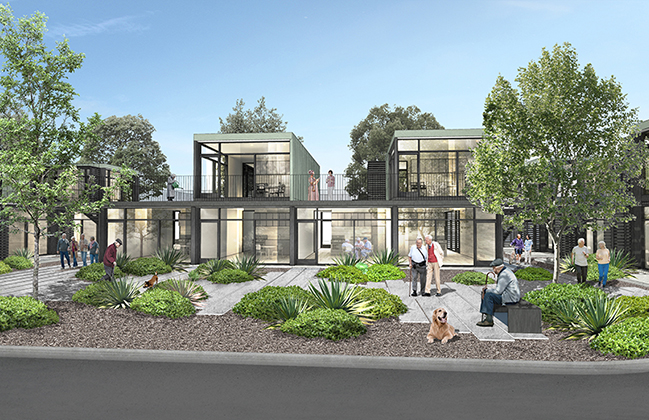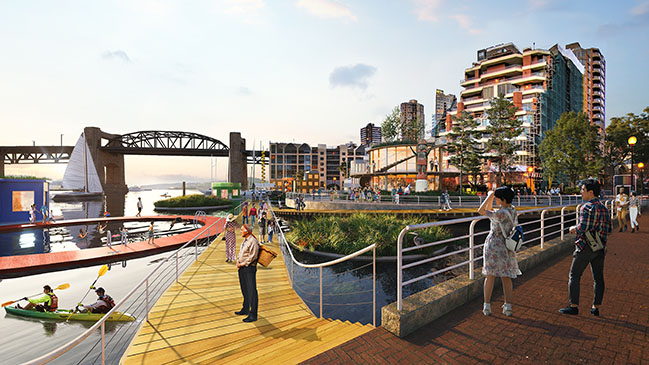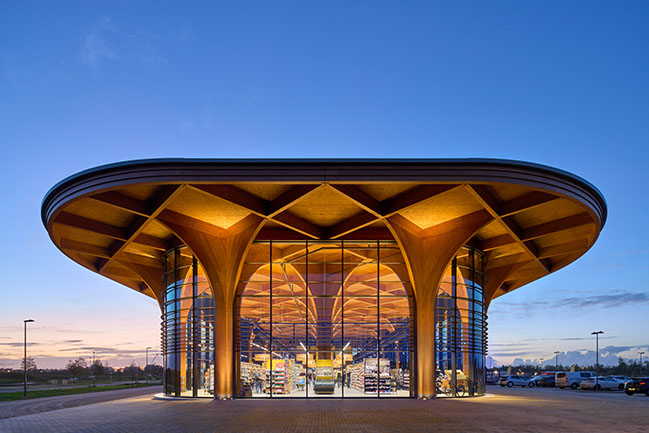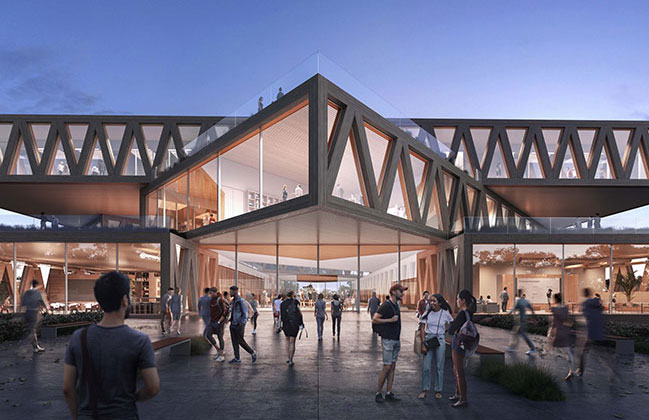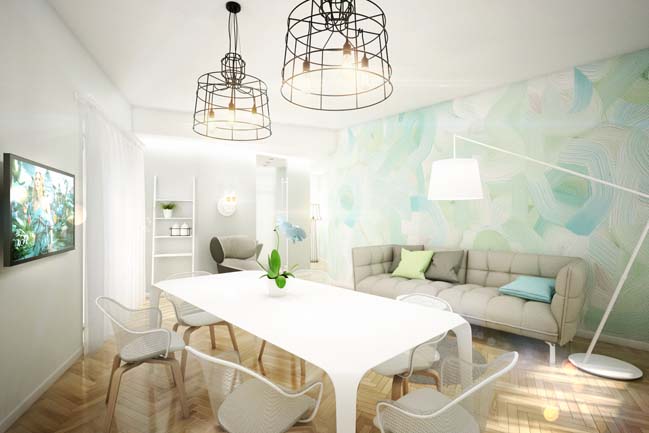11 / 21
2022
With ‘The Grandmother of Juneteenth,’ Ms. Opal Lee, at the helm, the new Texas-based museum dedicated to preserving the history of Juneteenth and legacy of freedom will be housed in a purposefully designed space by BIG alongside the architect-of-record, African American-owned design and build firm, KAI Enterprises...
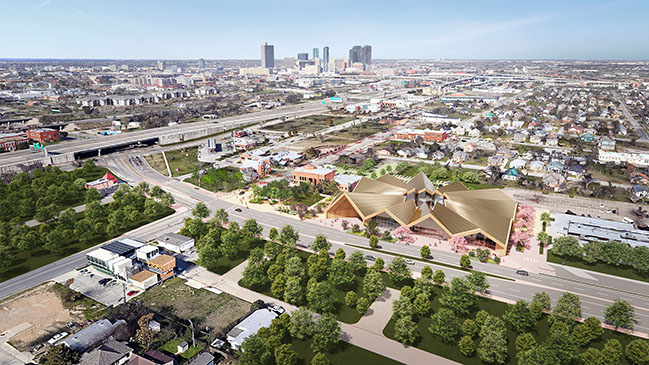
> Refugee Museum of Denmark by Bjarke Ingels Group
> BIG transforms the WWII bunker into Invisible Museum in Denmark
From the architect: Declared a federal holiday in the U.S. on June 17, 2021, when President Joe Biden signed the Juneteenth National Independence Day Act with Ms. Lee by his side, Juneteenth (June 19th) commemorates the Emancipation Proclamation’s enforcement and the liberation of the remainder of the enslaved both in Texas and throughout the newly reformed United States, which happened on June 19, 1865.
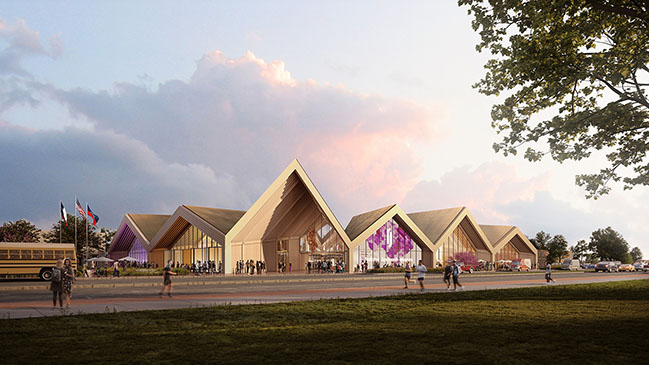
Located in the Historic Southside of Fort Worth, Texas – one of the South’s most underserved communities – The National Juneteenth Museum will be the epicenter for the education, preservation and celebration of Juneteenth nationally and globally, hosting exhibitions, discussions, and events about the significance of African American freedom. The new 50,000 square foot building, expected to break ground in 2023, includes immersive galleries, a business incubator, food hall for local vendors, Black Box flex space, and a theater.
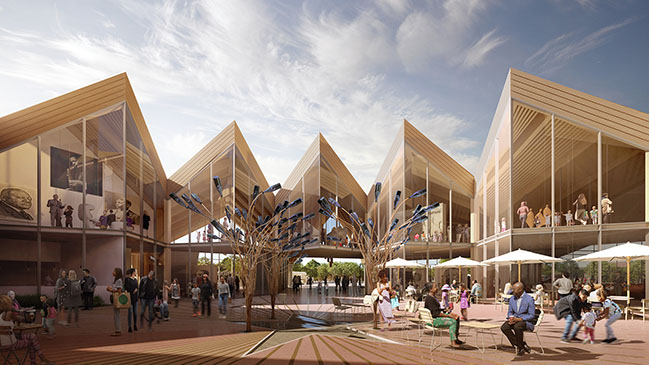
“Seeing the national museum moving forward is a dream fulfilled. I’ve had a little Juneteenth Museum in that very spot for almost 20 years, and to see it become a central place for discussion, collaboration and learning seems to be the providential next step – from my walking campaign to Washington, D.C., the petition, and having Juneteenth declared a federal holiday. It’s mind-boggling, but I’m glad to see it all come to pass,” says Ms. Opal Lee, Founding Board Member, National Juneteenth Museum.
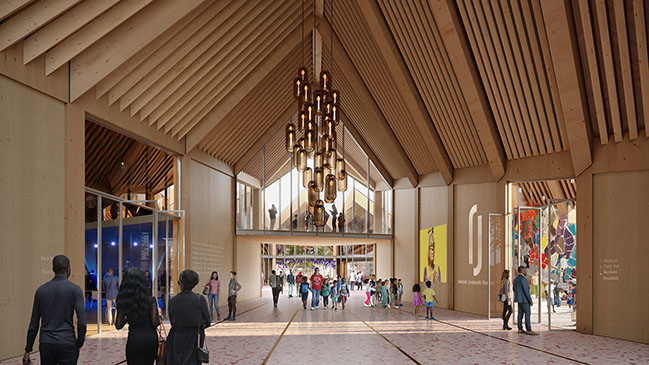
The Historic Southside neighborhood in Fort Worth was divided by the I-35W highway in the 1960s – a time when major infrastructure projects slashed through neighborhoods of predominantly low-income communities across the country. The National Juneteenth Museum, designed in close collaboration with the local Fort Worth community, seeks to provide a cultural and economic anchor for this neighborhood and act as a catalyst for ensuring its future vitality.
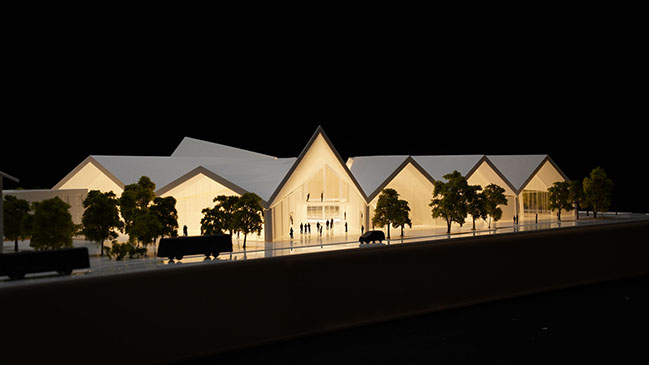
“The National Juneteenth Museum came to BIG looking for a design that captures the social, cultural, and spiritual importance of Juneteenth celebrations for black people while expressing its historic significance and relevance to all Americans. By incorporating a food court with local vendors, a business incubator, black box theater and auditorium, The National Juneteenth Museum will be at the core of a vibrant center to the long neglected Historic Southside. Our hope is that this building will become a gateway to the Historic Southside community of Fort Worth while serving as a national and global destination. Juneteenth is not only American history – it is world history.” says Douglass Alligood, Partner, BIG-Bjarke Ingels Group.
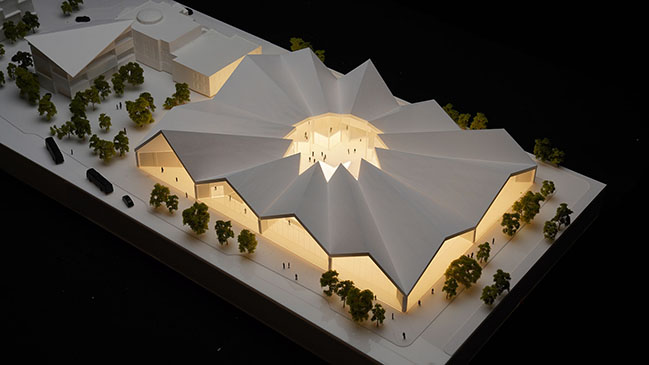
BIG’s design proposal, led by BIG NYC Partner Douglass Alligood (AIA, LEED AP, NOMA), embraces the local African American experience–at-large through motifs, symbolic touchpoints, and inclusive wayfinding. Informed by the gabled rooftops that define the Historic Southside neighborhood, the museum merges the historic gabled silhouette of individual homes with their protruding porches to create spaces for learning, gathering, and contemplation.
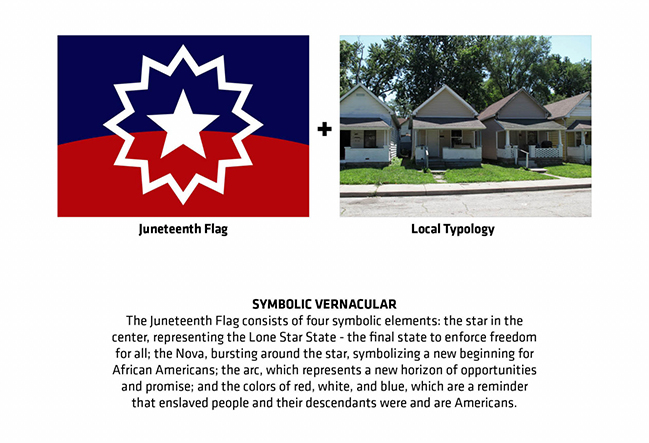
Douglass continued, “This project is special to me on a personal level as well. After nearly 40 years in this profession, I have the opportunity to lead a design for a project that is focused on African American culture. Our engagement with Ms. Opal Lee and members of the community, to really understand their needs, is what informed a lot of the design principles. As a black architect, this project is one of the most rewarding experiences of my career.”
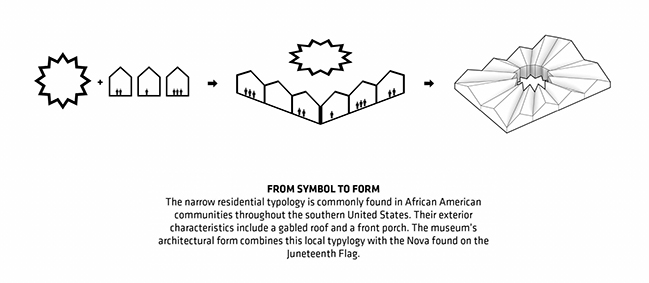
The museum’s undulating roof creates a series of ridges, peaks, and valleys of varying heights that combine to create a ‘nova star’ shaped courtyard in the middle of the museum. Meaning ‘new star,’ the nova star represents a new chapter for the African Americans looking ahead towards a more just future. The publicly accessible courtyard will be the anchor for the museum and its activities. At the center of the courtyard, a ‘five point’ star is engraved into the terrazzo pavement in gold, featuring ‘starbursts’ of varying warm concrete colors. In addition to representing Texas, the last state to adopt and acknowledge the freedom of African American slaves – the star nods to the American flag’s 50 stars that represent all 50 U.S states, representing the freedom of African Americans across the country.
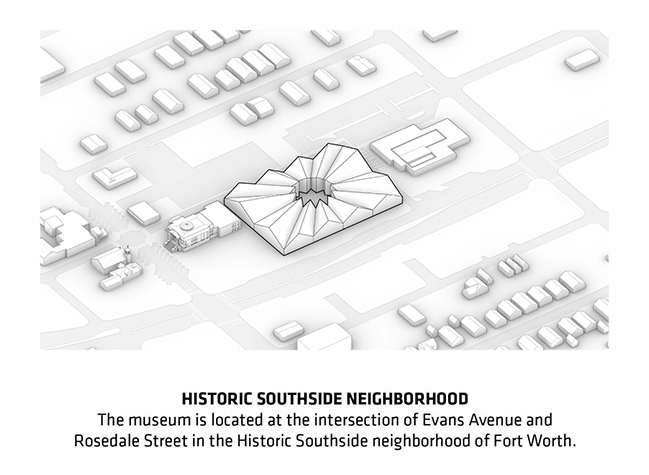
While five street-level entrances allow the galleries and exhibitions to be accessed as individual spaces, two publicly-accessible covered ‘portals’ connect directly to the courtyard and main gallery entrances, welcoming visitors from both the north and the southwest of the site via generous entryways defined by warm, vibrant colors. The mass timber structure that defines the design’s materiality continues into the interior, visually connecting the two realms.
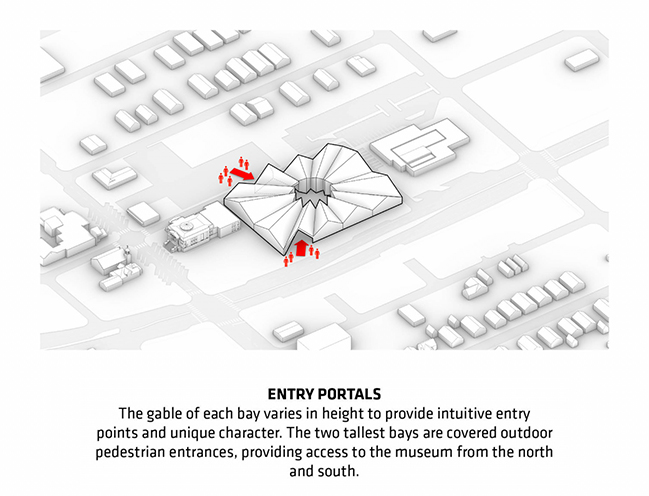
In addition to this visual continuity of the materiality, the building’s public and private realms are also interconnected through the museum’s circular layout; on the ground floor, the two portals that connect to the courtyard are flanked by each of the programs: one portion of the galleries, the business incubator, food hall for local vendors, Black Box flex space, and theatre. To access the museum galleries, which begin on the ground floor, guests enter the generous reception area, and are guided to the light-filled mezzanine level via staircase or wheelchair-accessible elevator.

The mezzanine level reveals the rest of the gallery spaces, which are connected by a ring of circulation that wraps the courtyard. Glass is utilized as the interior wall of both the ground and mezzanine floors to create a sense of openness and transparency while complementing the pared-back timber and concrete materials. Similarly, the ‘nova star’ cut out of the roof at the center of the building of which the mezzanine wraps around allows light to travel through the entire space. Wrapping around the nova star shape above, the mezzanine galleries physically connect each of the programs while being literally elevated – providing visitors an above perspective of the public courtyard below, and those in the courtyard with views of the galleries above.
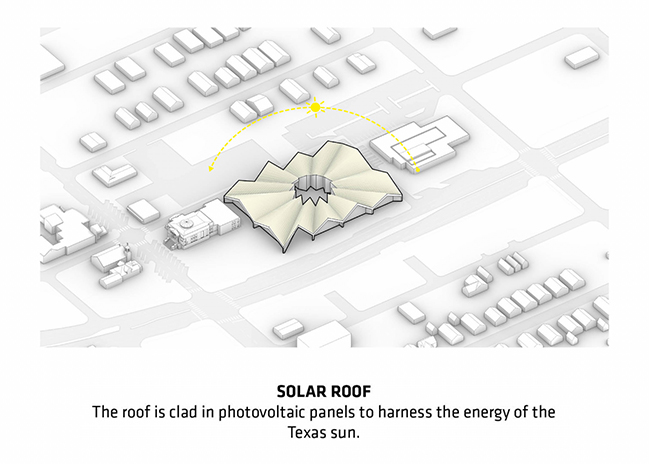
Outside the museum building, a network of plazas provides wayfinding opportunities, extending the sense of community of the interior to the outdoor spaces. Polished concrete and terrazzo flooring continue out to the exterior spaces, creating visual continuity between the public and private realms. Generous lawns, native landscaping, and wood seating are dispersed throughout the plaza areas, providing places for outdoor exhibitions, large-scale installations and gatherings.

“KAI is excited to work in concert with BIG as the vision outlined by Ms. Opal Lee of realizing her lifelong dream of making Juneteenth a National Holiday witnessed the signing in the Oval Office come to life in Fort Worth. As President of KAI and life-long learner, passionate about history, I’m honored to contribute to this significant and important part of the fabric of US history,” says Darren L. James, FAIA, NCARB.
Architect: Bjarke Ingels Group
Client: The National Juneteenth Museum
Location: Fort Worth, Texas, USA
Year: 2022
Collaborators: Source Building Group, Cumming Group
Partners-in-charge: Bjarke Ingels, Douglass Alligood, Daniel Sundlin
Project Manager: Linus Saavedra
Project Leader: Alvaro Velosa
Team: Marcus Wilford, Montre'ale Jones, Florencia Kratsman, Ololade Owolabi, Abdur-Rahman Harunah, Qicheng Wu, Pooja Annamaneni, Alejandra Cortes, Terrence Chew, Bianca Blanari, Andrea Megan Hektor, Jonathan Otis Navntoft Russell, Cristina Minguela
The National Juneteenth Museum by Bjarke Ingels Group
11 / 21 / 2022 With The Grandmother of Juneteenth, Ms. Opal Lee, at the helm, the new Texas-based museum dedicated to preserving the history of Juneteenth and legacy of freedom will be housed in a purposefully designed space by BIG..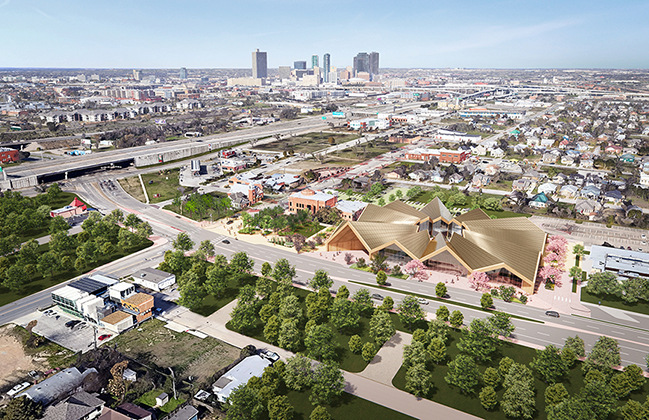
You might also like:
Recommended post: Modern apartment with pastel colors

